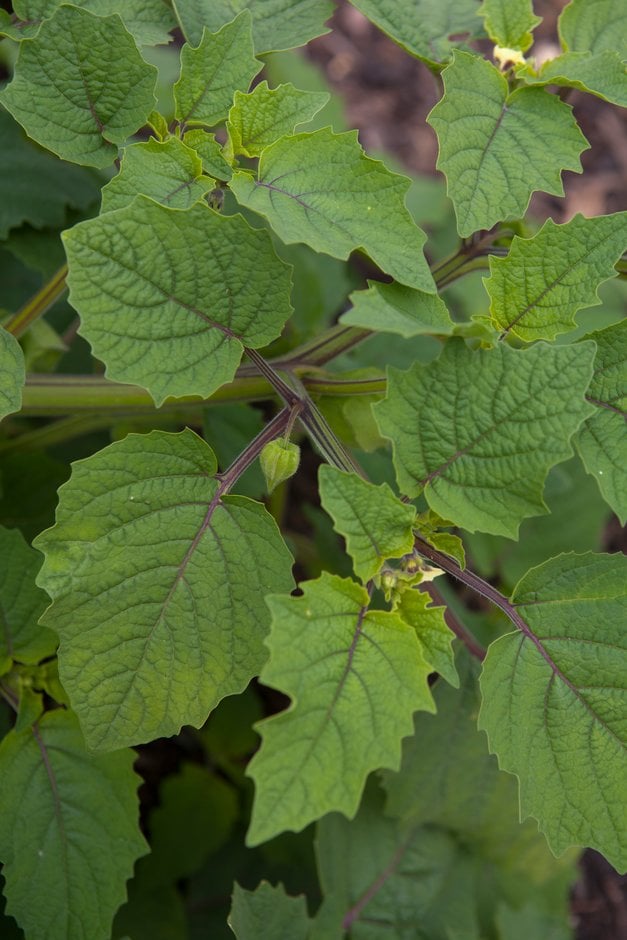Physalis peruviana (F)
Cape gooseberry
A lax, branching, herbaceous perennial with soft, hairy leaves and small, yellow flowers with chocolate-brown centres in mid- to late summer. These are followed by edible, orange berries. each enclosed in a papery, lantern-shaped husk
Other common names
gooseberry tomatoPeruvian Cape gooseberry
see morePoha
purple ground cherry
ground cherry
strawberry tomato
Synonyms
Physalis edulisSize
Ultimate height
1–1.5 metresTime to ultimate height
1–2 yearsUltimate spread
1–1.5 metresGrowing conditions
Moisture
Moist but well–drained, Well–drainedpH
Acid, Alkaline, NeutralColour & scent
| Stem | Flower | Foliage | Fruit | |
| Spring | Green | |||
|---|---|---|---|---|
| Summer | Brown Yellow | Green | ||
| Autumn | Green | Orange | ||
| Winter |
Position
- Full sun
Aspect
South–facing or West–facing
Exposure
Sheltered Hardiness
H2Botanical details
- Family
- Solanaceae
- Native to GB / Ireland
- No
- Foliage
- Deciduous
- Habit
- Bushy
- Genus
Physalis can be annuals or rhizomatous perennials with simple or pinnately lobed leaves and small bell-shaped flowers in the leaf axils, followed by fleshy, sometimes edible, yellow, red or purple berries, enclosed in enlarged, often colourful, calyces
- Name status
Unresolved
How to grow
Cultivation
Sow seed indoors in early spring. Grow on in a cool greenhouse, or outdoors in milder areas once all risk of frost has passed. Needs well-drained soil in a sunny position and support for the lax branches
Propagation
Propagate by seed, or by division in spring
Suggested planting locations and garden types
- Cottage and informal garden
- Patio and container plants
Pruning
Cut down to ground level after harvesting the fruit
Pests
Generally problem free
Diseases
Generally problem free
Love gardening
Sign up to receive regular gardening tips, inspiration, offers and more
View our Privacy Policy
Get involved
The Royal Horticultural Society is the UK’s leading gardening charity. We aim to enrich everyone’s life through plants, and make the UK a greener and more beautiful place.
